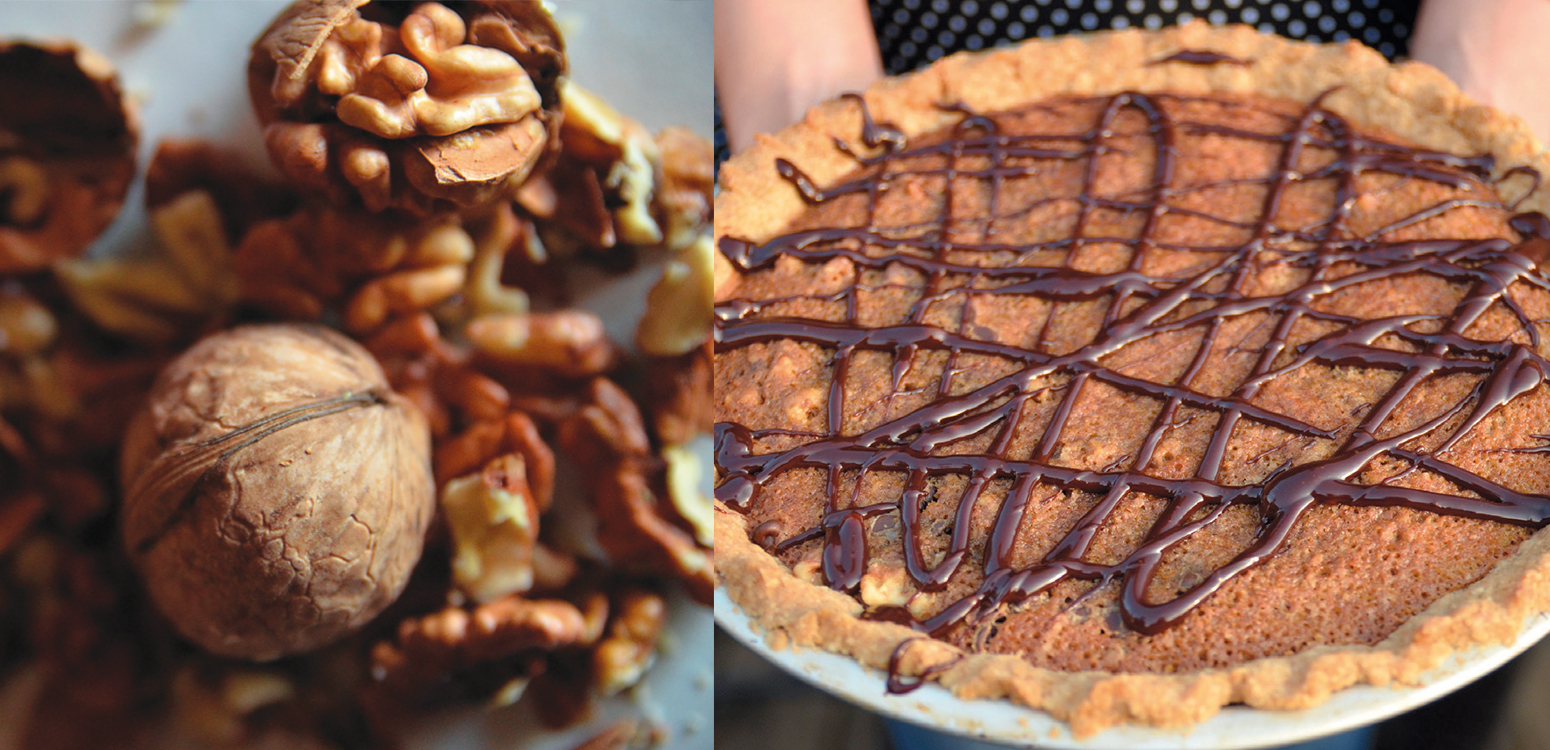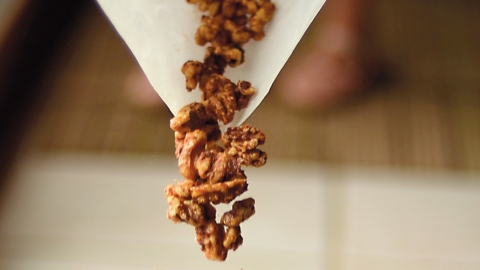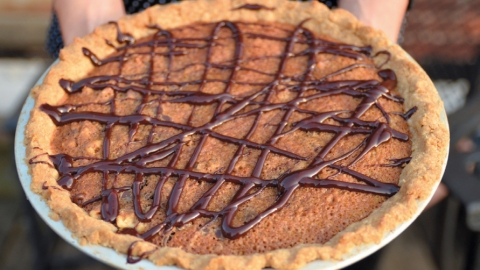Autumn in a Nutshell
For some people, the smells and tastes of fall are a high point of the entire year. As the countryside begins to dry out and prepare for winter, the scents of cut grass and rain-soaked earth give way to the musty, vinegary odor of the cider press, the aroma of roasting pork and pungent herbs like sage and rosemary, which can stand up a little longer to the cooler, sometimes frosty, nights.
If you could take the perfumes and flavors of fall and compress them into one tiny nugget, you would have the fruit of the native North American black walnut tree: earthy, oily and intense. For those of us who like our fall flavors a little more subdued, there is the more familiar English walnut, native to Eastern Europe and Asia.
Here in Michiana, luckily we have both.
Black walnuts are easy to find, just not so easy to get at—which could be part of the reason they aren’t as ubiquitous as the English variety. The giant green orbs littering the ground everywhere this time of year need to be hulled, which means black-stained hands. And clothes. And children.
Then, you need to let the nut dry out. (If you shake the nuts and hear a little rattling inside, they’re ready.) After they’re dry, black walnuts bring new meaning to the proverbial “tough nut to crack.” Your garden-variety nutcracker will not be up to the task. Most people use a hammer—or a car, which turns the task from a chore to Awesome, but means laboriously picking the meat out of shell fragments.
Fortunately, if you don’t want to go through all that trouble yourself, shelled black walnuts can easily be purchased locally at farmers markets, farm stands and the grocery store.
Irvin and Carol Lemler harvest them in Bourbon, Indiana, and sell them at the South Bend Farmers Market. Dean and Vera Witmer of Creekside Farm sell black walnuts at the Mill Race Farmers Market in Goshen, Indiana.
Black walnuts are often found in shortbreads, cookies, cakes and ice cream. But they can also be used in savory cream sauces or other dishes and go well with sage and other fall flavors, such as squash or pumpkin.
English walnuts are a less common feature of our local landscape, but luckily for us farmer Beth Tollas grows them on her family’s three-acre orchard in Berrien County, Michigan. Tollas and her family harvest the nuts and let them dry in the shells on screens for four to six weeks, which makes them less chewy and more nutty-flavored, Tollas says, before they “get cracking.”
Farmer Mary Sholtey of Syracuse, Indiana, also grows English walnuts and sells them at the Syracuse Artisans Farmers Market in Kosciusko County.
Try English walnuts in stir-fries, pies or anywhere you want an extra, nutty punch.
Spiced Candied Walnuts
Kentucky Derby Pie
SOURCES
Black Walnuts: Irvin and Carol Lemler, Dean and Vera Witmer of Creekside Farm. Local grocery stores often carry black walnuts under the Hammons label, which are gathered from 16 states around the Midwest, including Indiana and Michigan. They can also be ordered online at Black-Walnuts.com.
English Walnuts: Beth Tollas, Mary Sholtey.









